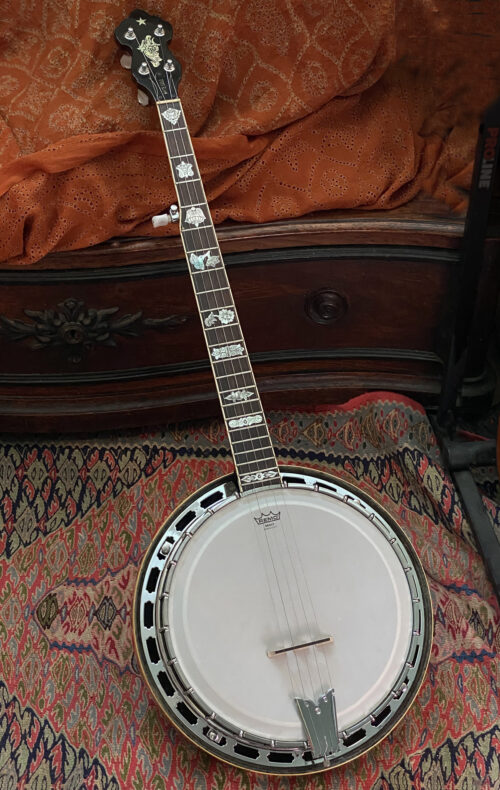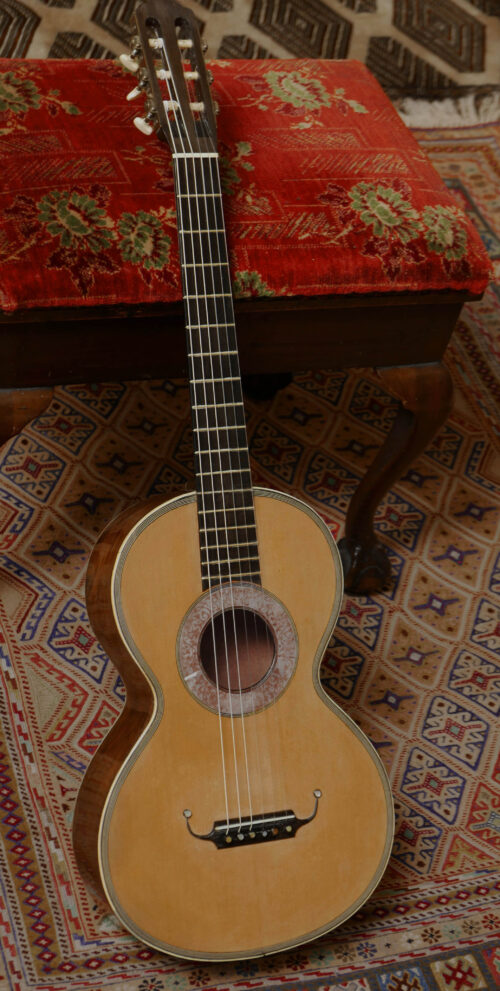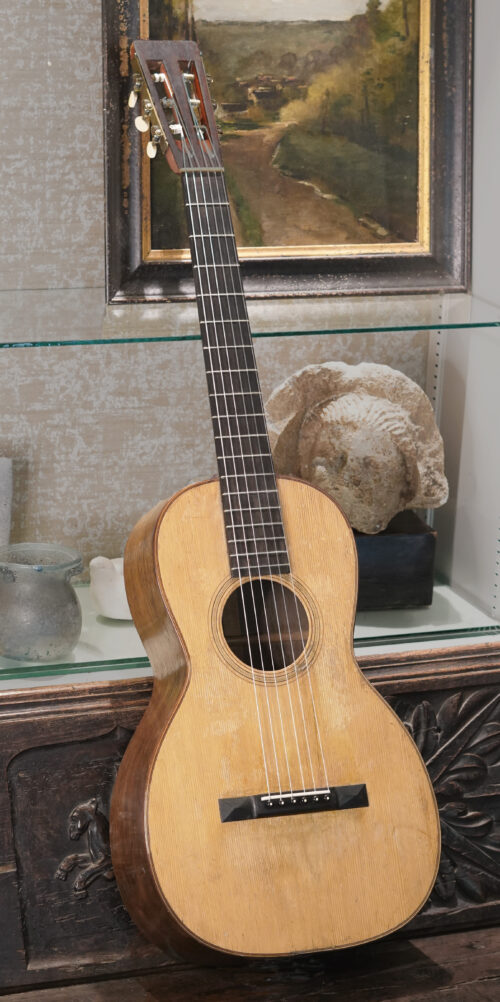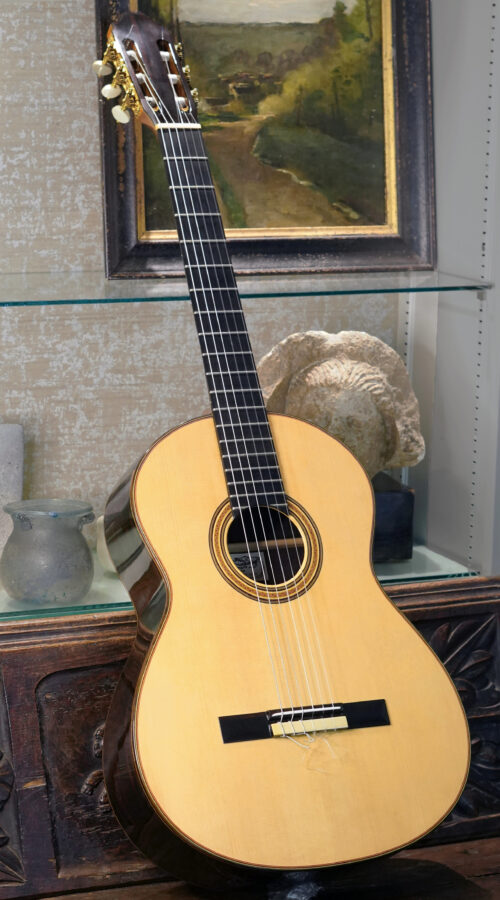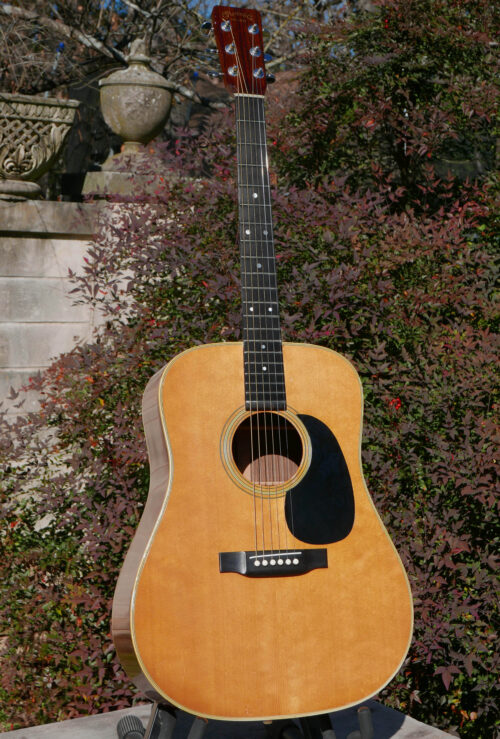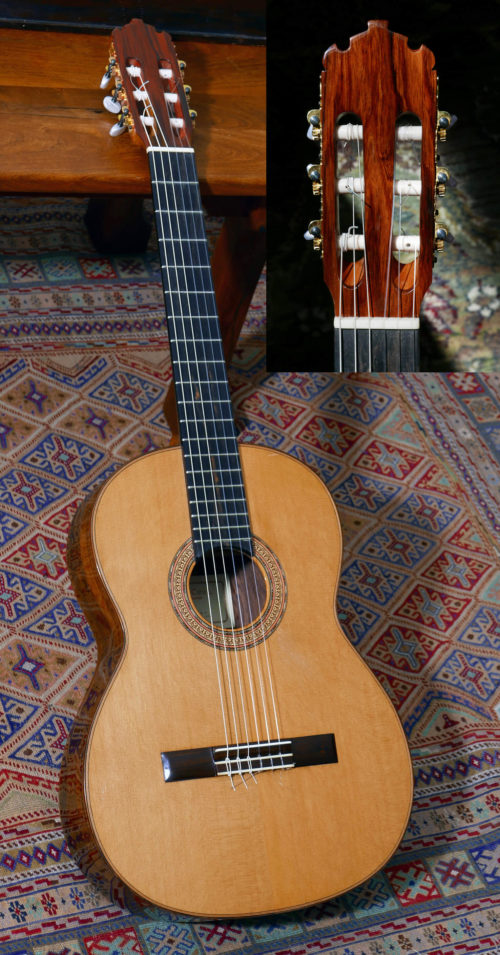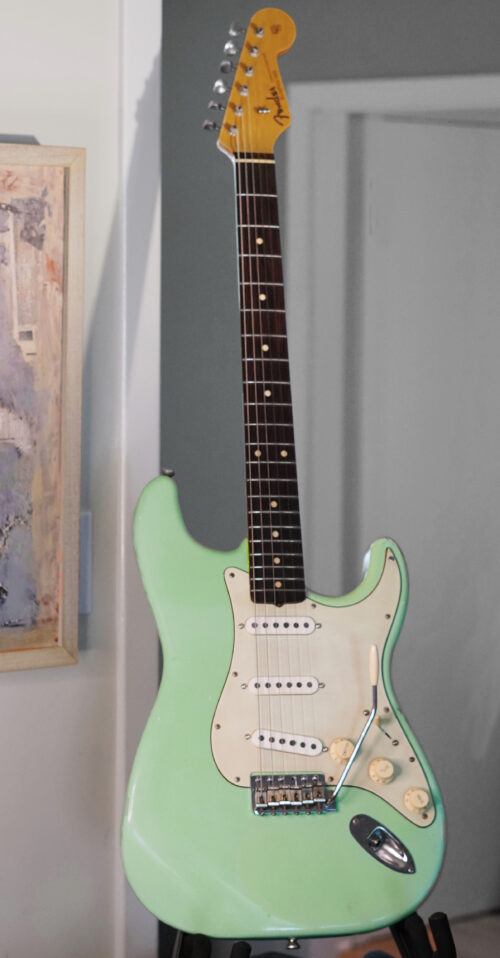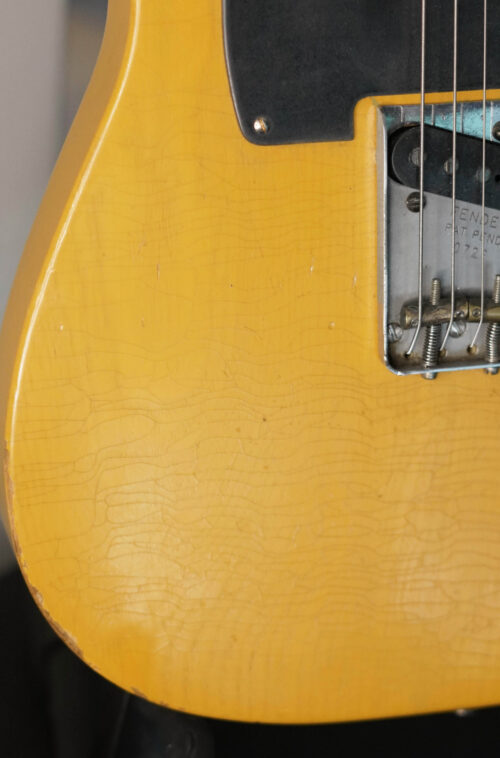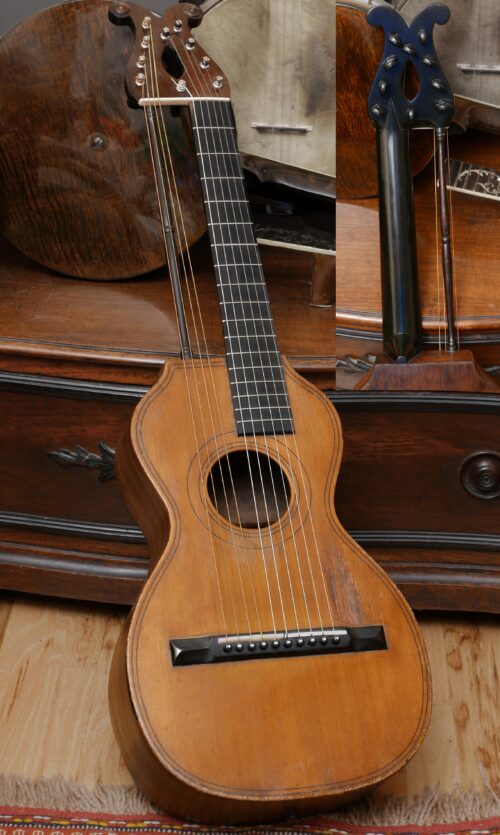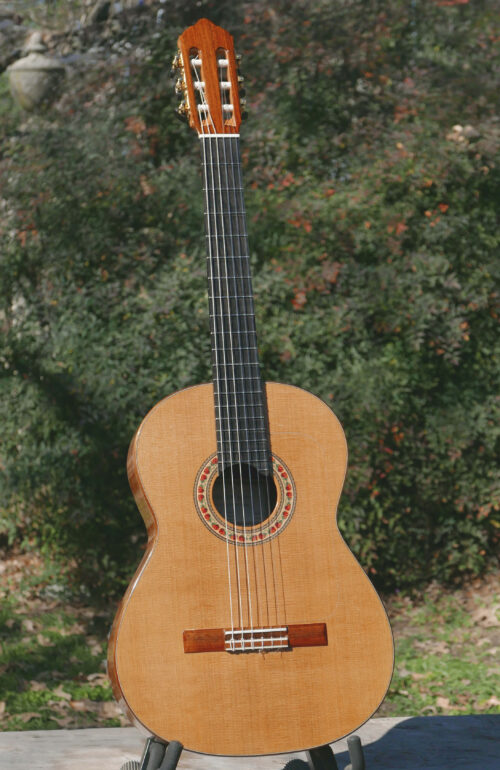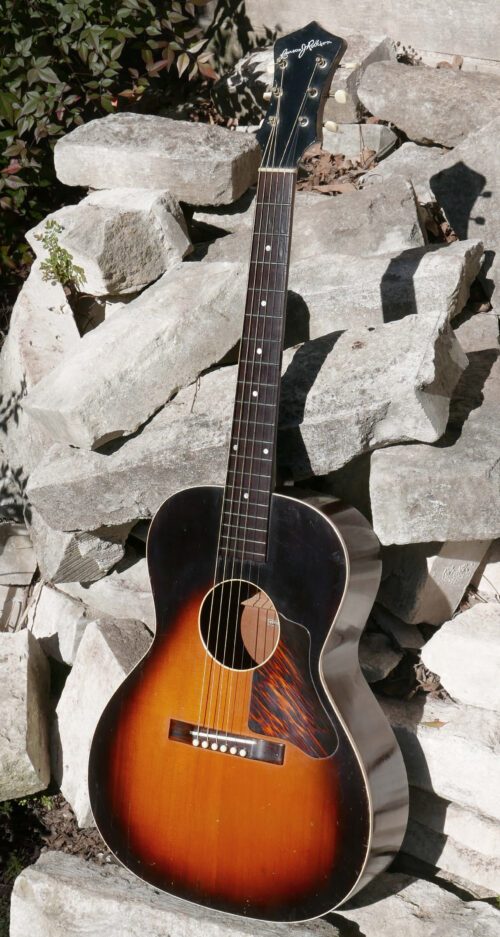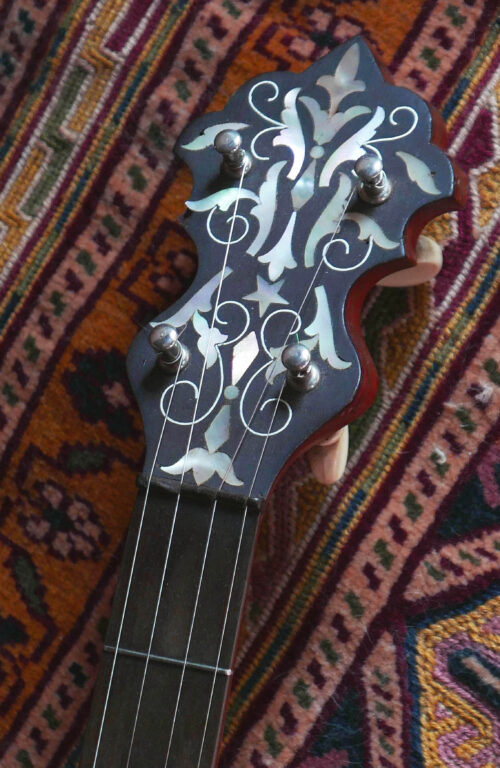Rare Alvarez Whyte Eagle 5 string Banjo very early production
Early 1970s, but in remarkably original condition. And this instrument is from the first, early production– so it has the maple 3-ply rim. This should not be compared to later production Whyte Eagles in the 70's – this is a very rare early one with unique features, described below, and great tone.
This banjo design is based on:
• neck/head/inlays: based on the high end Fairbanks Whyte Ladye of the early 20th century– one of the most beautiful designs in banjo history
• the pot assembly is modeled closely on the Gibson TB3, archtop of the 1930's. In fact it's a remarkable recreation of that design (and sound) – a more faithful recreation that many Gibson post-war versions.
Bluegrass banjo players seek out the 70’s Alvarez Whyte Eagles, known for their tone and craftsmanship. It was a pretty short window of only about five years, when these banjos were made with this kind of craftsmanship. They blow away most any banjo made and marketed (from any country) in the 60s, 70s and 80s– and they show no logos on headstock– just beautiful mother of pearl. It’s the model 4310 “Whyte Eagle”. Based on late 1920’s Vega Griffin (Tubaphone #9) style inlays, with engraved, carved heel. Sunburst finish maple banjo, Gibson-style 2 piece flange, full height 20 hole archtop tone ring, dual coordinator rods, flamed maple resonator, maple neck, chrome finish. Neck is butterfly with ebony strip on back of neck, down the center.
It’s extremely rare to find a Whyte Eagle from this very early period (serial number is 1776), when they first came out and the company bent over backwards to produce an instrument with zero compromise, from the inlays to the maple rim. The early features that are not on the later 70's Whyte Eagles, are – in addition to the 3-ply maple rim (not the 10-ply rim of almost all other Whyte Eagles) – the smaller star on the front of headstock (later models had a larger star), no “Alvarez” logo just the eagle inlay, and a darker sunburst on the resonator and also on the back of the neck.
Flamed maple resonator (sunburst back, with some of milkiness to the original finish)
Maple butterfly neck
Hand-carved heel
Mother of pearl inlays
Original tuners
Grover bridge
1 3/16 nut
Scale: 26 ¼ inches
20 hole archtop tone ring
11 inch head
With original hard shell case. Price $1850.
